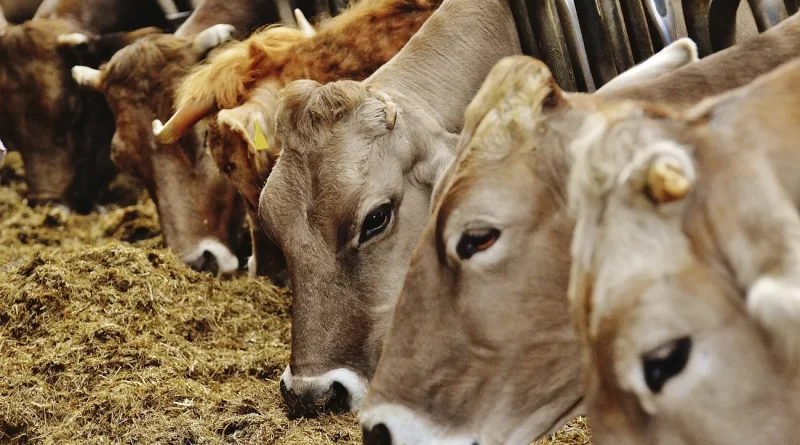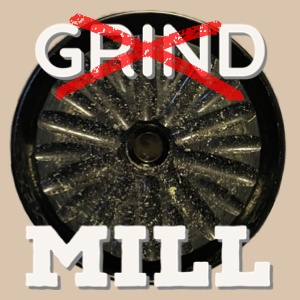Feeding hemp to dairy cows produces THC infused milk; gets them high
A new study published in Nature Food has highlighted that feeding hemp to dairy cows can lead to Delta 9 THC in the milk. Besides the industry darling, ∆9-THC, researchers also found ∆9-THC, ∆9-THCA, ∆9-THCV, CBD, CBN and CBDV in the milk – though at minute levels. That’s right, federally legal and allegedly non psychoactive hemp silage goes in, and cannabis infused milk comes out.
The title of the paper is: Transfer of cannabinoids into the milk of dairy cows fed with industrial hemp could lead to Δ9-THC exposure that exceeds acute reference dose.” Written by Bettina Wagner, Pietro Gerletti, Peter Fürst, Oliver Keuth, Thorsten Bernsmann, Annett Martin, Bernd Schäfer, Jorge Numata, Marc C. Lorenzen & Robert Pieper .
For the experiment, the researchers fed two different hemp mixes (silages) to ten dairy cows split up into two groups: All groups were fed Hemp Silage A, a low cannabinoid mix of whole plant hemp, to transition from their previous corn silage. Then Group H (H for high) transitioned to Hemp Silage E, a high cannabinoid mix of only leaves, flowers, and seeds – while Group L (L for low) did not. Cows in both groups were fed up to 0.93 kg dry hemp matter per cow per day.
High Cows, Hey is for Horses
Group L cows that switched to low cannabinoid hemp silage had no notable changes. In contrast, Group G cows that were transitioning to the high cannabinoid hemp silage ended up eating less, yielding less milk, and even having noticeable signs of… highness such as lower respiratory and heart rates. That’s not all though. Researchers noted:
“Concomitantly, changes in animal behaviour and appearance were evident (Fig. 1f), such as pronounced tongue play, increased yawning, salivation, nasal secretion formation, prolapse and reddening of the nictitating membrane, and somnolent appearance.”
Fig. 1f includes a picture of a cow with red eye.

Scientist knew how much of each cannabinoid was present in the hemp silage, and knew how much was ingested by each group throughout the entire observation period.
“The average ingested doses of ∆9-THC and CBD were 1.6 ± 0.3 and 10.7 ± 1.9 mg per kg body weight for group L, and 3.1 ± 0.7 and 20.4 ± 4.4 mg per kg body weight for group H”
For contrast, this would be like a 70 kg human eating an edible with ~210mg of ∆9-THC and ~1400mg of CBD over multiple days. Researchers noted:
“For humans, the lowest-observed-adverse-effect-level for ∆9-THC is 0.036 mg per kg body weight. On average, the cows ingested up to 86 times more ∆9-THC during the exposure period, probably explaining the health effects they exhibited.”
How much THC is in the milk of hemp fed diary cows?
The amount will be in the micrograms – but could still cause a reaction. The report stated:
“Concentrations of up to 316 µg ∆9-THC and 1,174 µg CBD were detected per kg milk (Fig. 2).”
It’s unlikely that humans would actually get high drinking milk from diary cow that eats hemp leaves or even flowers. Though those with zero previous exposure to phytocannabinoids could feel effects and anecdata suggests they do. As always, more research is needed.
New data on cannabinoid milk transfer rates in ruminates
With the complete in and out data, the researchers were able to calculate milk transfer rates of cannabinoids at steady states – a first in cannabis research.
“No data on cow’s milk transfer rates for the other cannabinoids analysed was available from previous literature. We present here the milk transfer rates for ∆9-THCA (0.015%), Δ9-THCV (0.56%), CBD (0.11%), CBN (0.043%) and CBDV (0.0080%) in cows (Supplementary Table 8).”
Interesting that THCV is the most transferable; however, the researchers noted little risk.
“Although Δ9-THCV has the highest transfer rate, the low concentrations found in hemp silages make it unlikely to pose a risk to consumers.”
The risk to consumers if ∆9-THC unknowingly makes it into consumer goods can’t be understated.
The researchers continued by noting limitations to their research and being able to identify which cannabinoids or combination of cannabinoids with other things caused the cows to get high:
Although it is clear that the observed effects of industrial hemp silage feeding on animal health were mainly caused by the cannabinoids, it cannot be clearly defined which cannabinoid was responsible. Due to its high concentration in the cannabinoid-rich silage, ∆9-THC is the most likely cause, but combination effects may also play a role16,17,24,25. Finally, it should be considered that hemp plants produce other phytochemicals (for example, terpenes, flavonoids) that may have an impact on the changes observed26,27. Similarly, an effect due to minor changes in nutrient concentration of the diets by replacement of corn silage with hemp silage (Supplementary Table 1) could not be completely ruled out.
Some organizations urge brakes for hemp as livestock feed
This is not the first study to prove such a link, and many organizations are urging farmers not to feed hempfeed to their livestock. The American Association of Feed Control Officials (AAFCO) released a letter signed by 17 member organizations calling for hemp livestock feed to be halted while further research is carried out. Part of the letter read:
“To achieve approval, scientific evidence of appropriate limits needs to be established to protect consumers from unwanted exposure to cannabinoids,”
The American Veterinary Medical Association has also warned against hemp use in not just livestock feed but also pet food.
Heavens to Betsy… High cows, high milk, high beef?
Yet, the opposite reaction seems equally as likely to these new studies.
All the cannabis fed to the cows in this experiment were officially hemp under the US Farm Act of 2018 – containing less than <0.3% THC. While no studies have confirmed beyond this one, it’s reasonable to assume that feeding high THC type cannabis to cows would result in higher concentrations of cannabinoids everywhere – bloodstream, milk, even in the fat.
It is as of yet unclear if D9 THC, or any other psychoactive cannabinoids, are stored in the intramuscular fat of the cows.
You heard it here first: There’s a potential future where cows that are fed cannabis will yield cannabis infused beef. At the very least, naturally cannabis infused milk could theoretically be used to make naturally cannabis infused ice cream, or naturally cannabis infused cheese, or naturally cannabis infused yogurt, or naturally cannabis infused ghee, or naturally cannabis infused whey. Undoubtedly not the most efficient way to achieve that admixture, but iberico jamon isn’t just meat and acorns now is it.
Naturally THCV infused milk is just the beginning.
Just saying, WeedxWagyu could be headed to a new level.
Founder of The Highest Critic
Unpaid /r/trees mod
Certified Ganjier
Kine bud enthusiast


